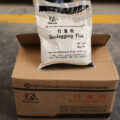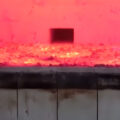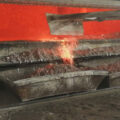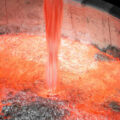The smelting of scrap aluminum is usually carried out under the condition of covering flux. The flux can not only protect the metal aluminum from oxidation, but also adsorb the formed oxides to remove these oxides from the aluminum alloy. There are certain requirements for the aluminum smelting flux, that is, the melting point is lower than the melting point of the alloy: the density is smaller than that of the alloy; it does not chemically react with the furnace gas, the furnace lining and the molten alloy. The process of transferring the oxide film on the alloy surface into the molten flux is very complicated, and it is determined by the interfacial tension between the alloy-oxide-flux interaction phases. When the phase interfacial tension of the flux on the contact interface with alloy or oxide is smaller, the surface is more easily wetted by the flux.

The aluminum casting flux must have better wettability to the oxide film than the flux to the alloy in order to absorb the oxide film. On the contrary, if the molten alloy is also well infiltrated by the flux, it will prevent the metal droplets from gathering in the alloy melt, causing a large amount of dispersed metal droplets of the alloy to be lost with the slag.
Chlorides such as sodium chloride and potassium chloride are commonly used as fluxes in the smelting of waste aluminum. When sodium chloride and potassium chloride are mixed in mass ratio, the surface properties are the best. However, this flux can also infiltrate the alloy very well, so adding 3% to 5% cryolite can increase the surface tension between the flux and the aluminum alloy interface, which is conducive to the accumulation of aluminum droplets and can reduce the aluminum alloy with slag Loss.
In the smelting of scrap aluminum process, the melting point of the flux is of great significance. The melting point of the flux should be lower than the melting point of the alloy. Nacl-KC1 series fluxes are widely used in production practice, and one group of them is divided into 40%-60%. The melting point of this mixture is close to the melting point of aluminum at 660°C. If 10% cryolite or 1.2% fluorite is added, its melting point drops to 631℃ and 641℃, respectively, but if the content of these additives is further increased, the melting point of the system rises sharply.
The amount of flux added also affects the loss of metallic aluminum during the smelting process. The flux is small, the slag produced has high oxide content and high viscosity. The aluminum alloy droplets dispersed in the slag are difficult to separate and are lost with the slag. If the flux is increased, the liquid slag with good fluidity can be obtained, and the loss of aluminum is small.





















